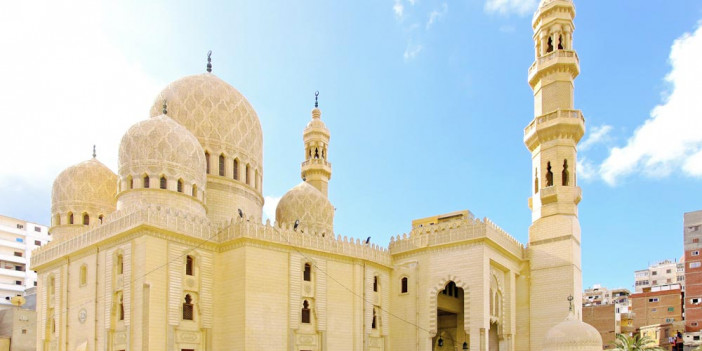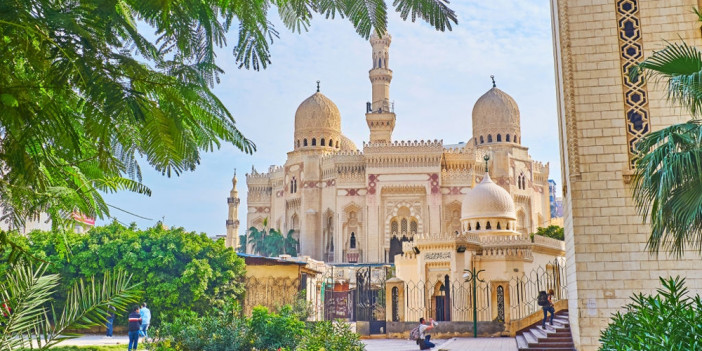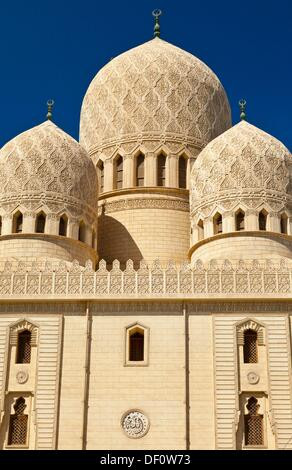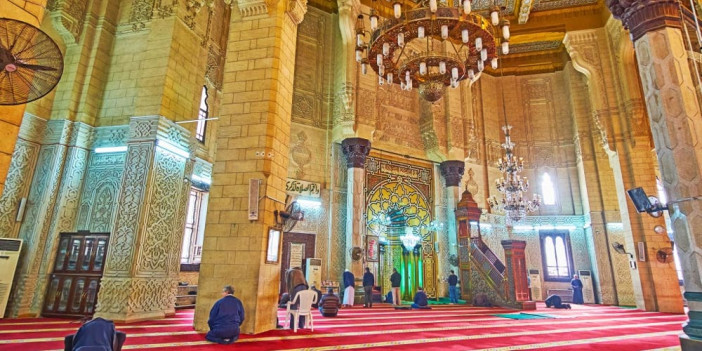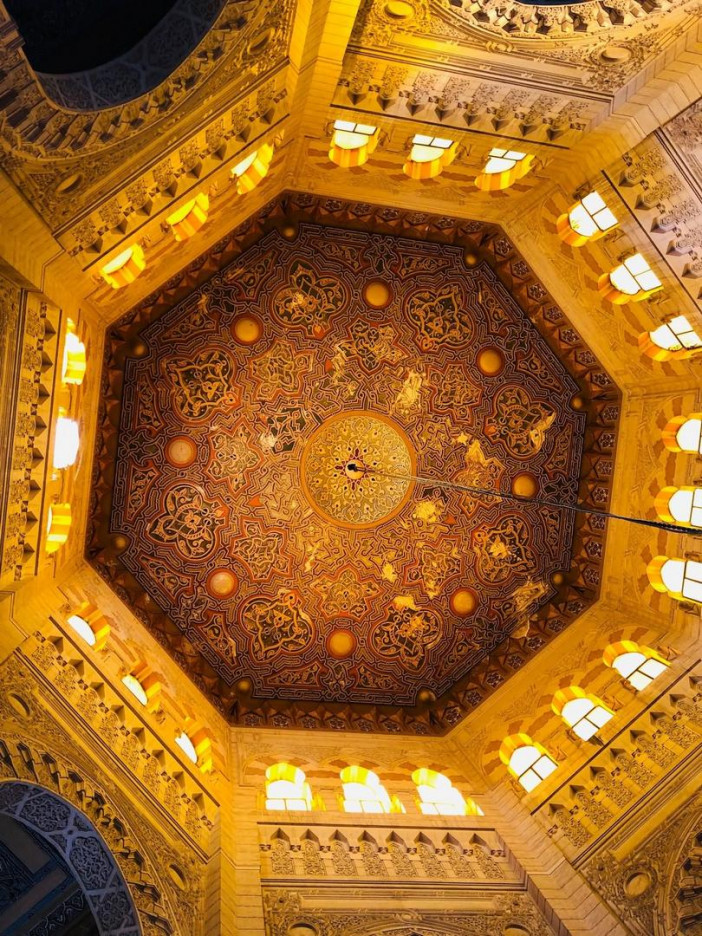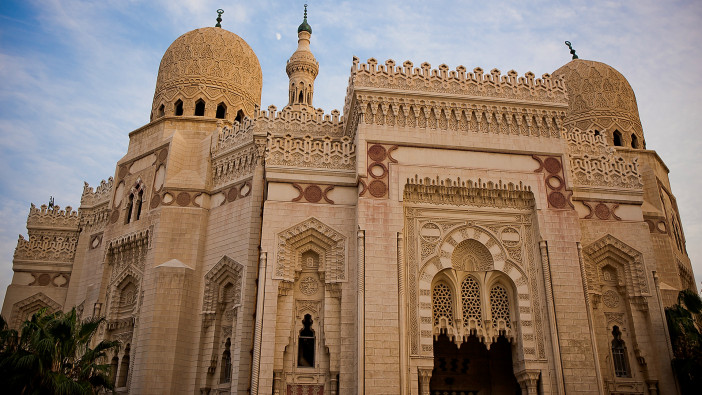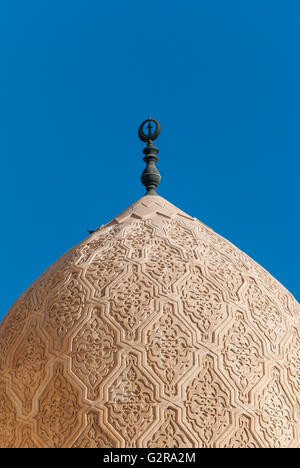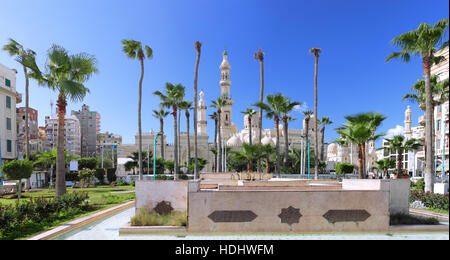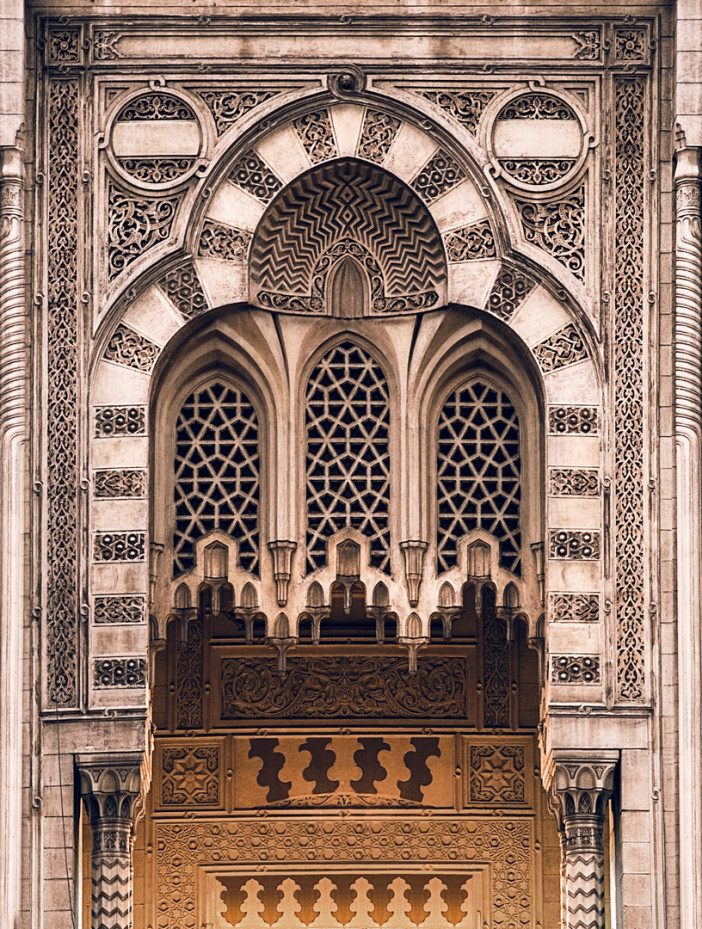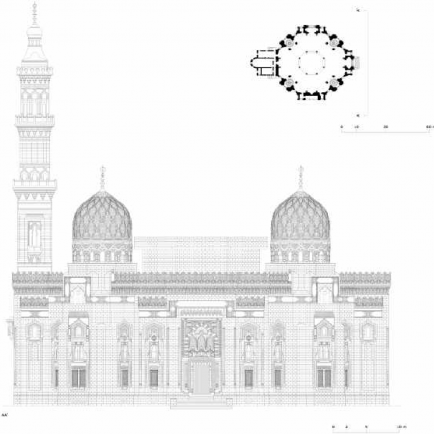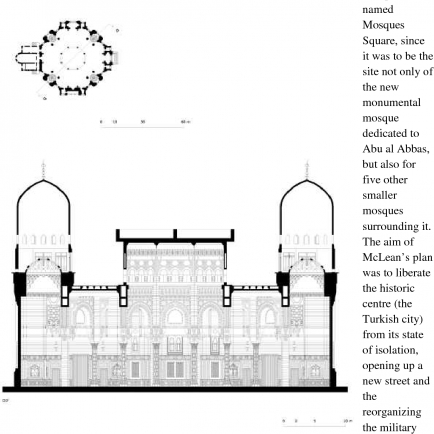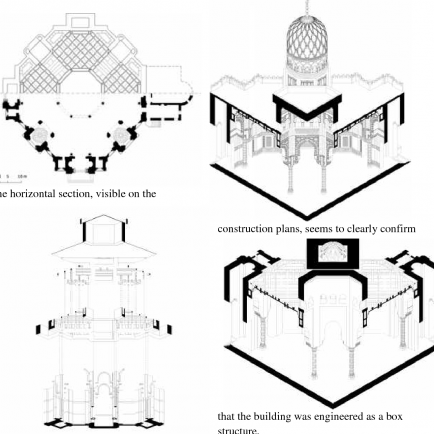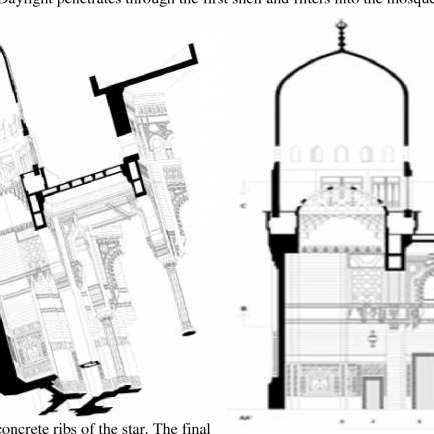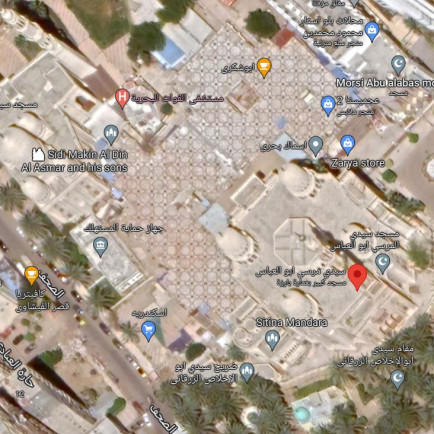Abu al-Abbas al-Mursi Mosque
History
The Sidi el-Mursi Abul-Abbas Mosque in Alexandria is one of Mario Rossi's best and most well-known buildings. Careful study of the working drawings made it possible to develop some important considerations concerning the construction methods imported into Egypt by Italian architects, engineers, contractors, and skilled workers, between the nineteenth and the twentieth centuries. Along with the documents in the family archive and some site photographs, it was possible to investigate Rossi's new methods of organizing t he building site and the relationships between design decisions, construction, and the dissemination of technologies. The new contribution made by this paper consists primarily of describing how this particular mosque was built, reconstructing the process by direct observation, and by interpreting Rossi's extremely complex working details, as well as surveying the building itself. The new approach imported into Egypt by Mario Rossi did not break with local tradition, whilst his introduction of reinforced concrete into Awqaf building practice exerted considerable influence and made him chef d'ecole and teacher for those who came afterwards. He was Chief Architect for the Egyptian Ministry of Awqaf from 1929 until 1954, and his approach to mosque design was an evident typological and stylistic innovation that left its mark on the architectural vocabulary of the time, establishing a new style that became widely adopted in Egypt and spread as far afield as Washington DC, Saudi Arabia, and Iraq. In a perspective of international cooperation to which we are urged by various countries around the Mediterranean, the primary aim of this type of research is to promote knowledge of this recent heritage: a prerequisite for developing effective tools for its enhanced apprec iation, preservation, and recovery, for which the obligatory starting point must be the creation of specialised archives and atlases of works.
Urban and Architectural
Al-Morsi Abu Al-Abbas Mosque, it's an octagonal shape, but the patron is intended to be regular in shape from the within, where the length of every of the ribs reaches 22 meters, it's distinguished by the colour of the cream and therefore the inscriptions and decoration that cover the substitute stones from all directions from the skin in equal proportions. Entering from the northern or eastern entrance, we are going to find that the decorations surround all the inside corners furthermore, as they cover the white marble floors, walls with an exquisite mixture between artificial stone from the highest, and from the underside covered with mosaic, with a height of 5 meters, and at the highest of the roof of the mosque, and at a height of 17 meters We see Arab inscriptions, arabesques and mosaics, mashrabiyas, and also the vents that decorate the mosque from all directions.
development of a field for mosques with a capacity of about 3,200 square meters
Description
The Andalusian style, on which the Al-Mursi Abu Al-Abbas Mosque was built, is characterized by domes and also the abundance of columns that support the roof, and also the minaret is tall, And also the arabesque and mosaic works within the windows and doors, and therefore the ornate mihrab raised from the minbar, all of this was evident inside the Abu Al-Abbas Al-Marsa Mosque, because it contains 16 marble and granite columns, and every column is one piece octagonal in shape, ending with a crown about eight meters high, four columns Ones of traction
References
| https://www.semanticscholar.org/paper/The-construction-of-the-Al-Mursi-Abou-al-%E2%80%98Abbas-Turchiarulo/8ded41a1dad2a488ae759ce0bc9a701820cedcb8#extracted https://egyptiangeographic.com/en/news/show/625 https://en.wikipedia.org/wiki/Abu_al-Abbas_al-Mursi_Mosque https://www.tripsinegypt.com/abu-al-abbas-al-mursi-mosque/ http://www.touregypt.net/featurestories/abbasmursimosque.htm https://www.islamicarchitecturalheritage.com/listings/abu-el-abbas-el-mursi-mosque |
Details
Location
Mr. Mohamed Karim 9, Omar Ibn Al-Khattab Group, the commercial market, Al-Masjid Square, Abu Al-Abbas Al-Mursi, Bahary, Customs Department, Alexandria 21500
Architect Name
Year of Build
completed in 1943
Area
3000 square meters
Drawings
Map
History
The Sidi el-Mursi Abul-Abbas Mosque in Alexandria is one of Mario Rossi's best and most well-known buildings. Careful study of the working drawings made it possible to develop some important considerations concerning the construction methods imported into Egypt by Italian architects, engineers, contractors, and skilled workers, between the nineteenth and the twentieth centuries. Along with the documents in the family archive and some site photographs, it was possible to investigate Rossi's new methods of organizing t he building site and the relationships between design decisions, construction, and the dissemination of technologies. The new contribution made by this paper consists primarily of describing how this particular mosque was built, reconstructing the process by direct observation, and by interpreting Rossi's extremely complex working details, as well as surveying the building itself. The new approach imported into Egypt by Mario Rossi did not break with local tradition, whilst his introduction of reinforced concrete into Awqaf building practice exerted considerable influence and made him chef d'ecole and teacher for those who came afterwards. He was Chief Architect for the Egyptian Ministry of Awqaf from 1929 until 1954, and his approach to mosque design was an evident typological and stylistic innovation that left its mark on the architectural vocabulary of the time, establishing a new style that became widely adopted in Egypt and spread as far afield as Washington DC, Saudi Arabia, and Iraq. In a perspective of international cooperation to which we are urged by various countries around the Mediterranean, the primary aim of this type of research is to promote knowledge of this recent heritage: a prerequisite for developing effective tools for its enhanced apprec iation, preservation, and recovery, for which the obligatory starting point must be the creation of specialised archives and atlases of works.
Urban and Architectural
Al-Morsi Abu Al-Abbas Mosque, it's an octagonal shape, but the patron is intended to be regular in shape from the within, where the length of every of the ribs reaches 22 meters, it's distinguished by the colour of the cream and therefore the inscriptions and decoration that cover the substitute stones from all directions from the skin in equal proportions. Entering from the northern or eastern entrance, we are going to find that the decorations surround all the inside corners furthermore, as they cover the white marble floors, walls with an exquisite mixture between artificial stone from the highest, and from the underside covered with mosaic, with a height of 5 meters, and at the highest of the roof of the mosque, and at a height of 17 meters We see Arab inscriptions, arabesques and mosaics, mashrabiyas, and also the vents that decorate the mosque from all directions.
development of a field for mosques with a capacity of about 3,200 square meters
Description
The Andalusian style, on which the Al-Mursi Abu Al-Abbas Mosque was built, is characterized by domes and also the abundance of columns that support the roof, and also the minaret is tall, And also the arabesque and mosaic works within the windows and doors, and therefore the ornate mihrab raised from the minbar, all of this was evident inside the Abu Al-Abbas Al-Marsa Mosque, because it contains 16 marble and granite columns, and every column is one piece octagonal in shape, ending with a crown about eight meters high, four columns Ones of traction


